LIFEPeatLandUse: Quantification and valuation of ecosystem services to optimize sustainable re-use for low-productive drained peatlands (LIFE12 ENV/FI/000150)
Re-use options
Under investigation, there are seven different re-use options, representing the economic activity as well as measures related to the protection:
1. No measures (i.e. abandonment from active forestry)
This scenario presents the current use of low-productive drained peatlands in Finland. Some of these peatlands may slowly regenerate towards the structure and dynamics of natural mires, if their ditches are filled naturally. This is a slow process, however.

Photo: Juha Siekkinen
2. Tree biomass harvesting and then abandonment from active forestry
In this scenario, all trees are cut and used for energy wood, and no further measures are done. If ditches are filled naturally, the regeneration towards the structure and dynamics of natural mires can occur, but is a slow process as in re-use option 1.
3. Intensive forestry
Since timber growth was the principal aim for draining peatlands, this is an important re-use option to be evaluated. Increasing information on positive impacts of especially ash-fertilization on timber growth may change the current criteria concerning the profitability of timber growth in peatlands. Low-productive drained peatlands locating next to mineral soils can therefore be classified potentially productive, if ditch network maintenance and fertilization are carried out. It is assumed here that fertilizations and ditch network maintenance are repeated every 30 years to ensure satisfactory tree growth.
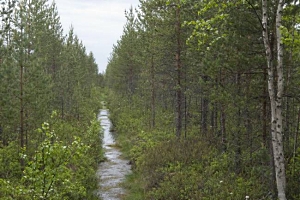
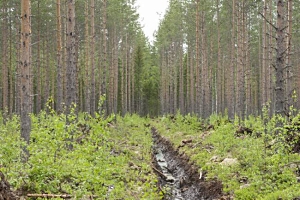
Photos: Anne Tolvanen
4. Restoration to a functional peatland
Restoration implies active measures, which aim at accelerating the regeneration of peatlands towards the structure and function of natural mires. Principal measures are the removal of trees and blocking of ditches. Restoration has been principally carried out in protected areas in Finland, but it is increasingly carried out also outside the protected areas to increase the connectivity of natural habitats. Allocation of this re-use option into the peatland landscape assumes that a protection area or undrained mire areas are located nearby, or there are observations on Habitats Directive or other red-listed species or habitats in the selected landscape.
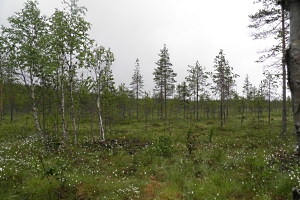
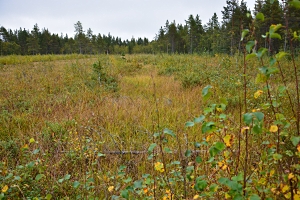
Photos: Erkki Oksanen
5. Peat harvesting without after-use
Present requirements for profitable industrial scale peat harvesting are that the size of the peatland is at least 50-100 ha and the peat layer is at least 1.5-2 m. In addition, the distance to a peat-burning power plant must be reasonable in order to minimize transport costs. The direct proximity of a planned peat harvesting site to a Natura 2000-area may hinder peat harvesting. No after use is one scenario concerning peat harvesting, since considerable amount (about 25 %) of the cut-over peatlands are classified as support area of peat harvesting and are still waiting a suitable after-use option in Finland. The average duration of peat harvesting varies between 10-30 years.
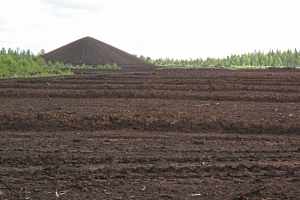
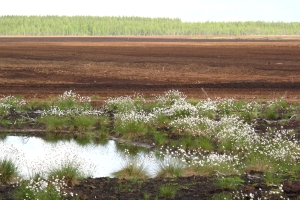
Photos: Anne Tolvanen
6. Peat harvesting + reforestation
Re-use option 6 is alternative for options 5 and 7 and also has to first fulfill the requirements set for peat harvesting. Reforestation is an important after-use option, since 57 % of cut-away peatlands have been evaluated to be well suitable for forestry (Picken 2007). Some peat (10-20 cm) should be left to ensure nutrients for the growing tree stand.
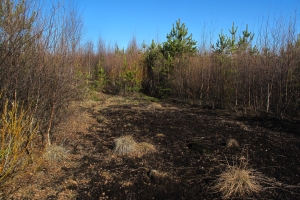
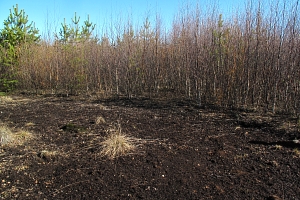
Photos: Anne Tolvanen
7. Peat harvesting + peatland rewetting
Re-use option 7 is alternative for options 5 and 6 and it has to first fulfill the requirements set for peat harvesting. About 20-25% of cut-over peatlands are estimated to be suitable for rewetting (Picken 2007). This measure is a recommended solution for pump-drained areas and for areas in the proximity of protected areas. Rewetting as an after use option therefore needs to be evaluated in the project. Rewetting for mire regeneration requires that some peat is left after harvesting, high water table is adjusted, and key peatland species, especially Sphagnum -species, are introduced. Rewetting for bird sanctuary implies that all peat is removed and artificial ponds are built.
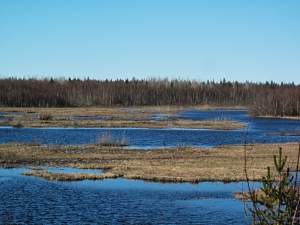
Photo: Anne Tolvanen

